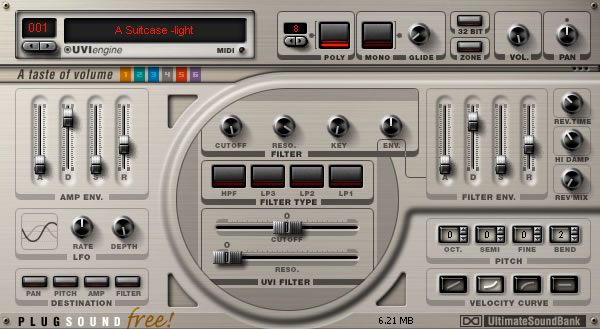Plugsound Pro Vst Download

Combining multitimbral sample playback, loop tempo matching, synthesis, multi-effects and an 8GB sound library, is Plug Sound Pro the only software sound source you need alongside your DAW? For those just beginning to make their way in the wonderful world of computer-based recording, a single 'one-stop-shop' product that combines sample playback, synthesis, loop manipulation tools and audio effects has a number of obvious advantages. Ultimate Sound Bank's Plug Sound Pro does all this and is supplied with an 8GB sample library.
Tried PlugSound? Free VST Does anyone have/use PlugSound? What's your opinion? I download their free VST plugin which has about 25 really impressive sounds. UVI is a developer of software instruments, effects and soundware, leveraging leading-edge research and design to create unique, expressive tools for musicians and audio professionals.
Available for both Mac and PC, PSP runs in stand-alone mode or as a plug-in (RTAS, VST, AU and MAS for Mac OS X and RTAS, VST and DXi for PC under Windows XP). The sound library includes sampled instruments, loops and 'one-shot' phrases that cover most musical bases and can also be expanded via USB's UVI Soundcards (see the 'Extra, Extra' box for details). So is PSP a good 'does it all' solution to sit beside your DAW at the heart of your computer-based studio? PSP is supplied with a software installation CD-ROM and a DVD-ROM containing the sample library. The latter uses a proprietary file format (which USB call a 'soundbank') and the single 8GB file is simply copied to a suitable hard drive location of your choice, prior to installing the software.
All the documentation is provided in a PDF format on the installation CD. Installation itself proved straightforward and PSP uses an iLok Smart Key for authorisation. I've no great preference for a software-based challenge/response over a dongle-based approach to copy protection, but you will need to purchase a Pace iLok dongle (about £30) if you do not own one. I did the majority of my detailed testing within Cubase 4 using the VST version of PSP. Initially, I experienced the occasional problem with PSP hanging but USB's technical support supplied me with a beta release of PSP v. This solved my problems and it has subsequently become an official release.
At first sight, the PSP user-interface appears quite busy but it is divided into a number of discrete sections and quickly becomes familiar. The middle-left of the display is dominated by the Part list. In stand-alone mode, MAS and RTAS modes, PSP is 64-part multitimbral, with four banks (A-D) of 16 Parts. However, in the other plug-in modes, only 16 MIDI channels are supported in each instance of the plug-in. Clicking on a Part selects it for editing, and double-clicking opens the Preset Browser for selecting sounds or loops from within the soundbank.
Positioned at the top left is the Preset Info display, indicating the RAM usage for the current part and the total RAM used. This display includes the Load/Save buttons for a Preset Multi: saving a Multi creates a snapshot of all the current PSP settings. The UVI Master section includes some nice presets. The Part and Pitch controls (centre-top) provide settings for the currently selected Part, and these are mostly self explanatory. The two Aux sliders set send levels to the two global effects plug-ins (more on which below) while the Polyphony setting has an influence upon the CPU usage of PSP, so it is worth adjusting if you find your system under stress. Aside from the obvious master Volume and Tune controls, the Global section also features a pretty (although not very detailed) frequency analyser display that can be toggled off.
The UVI Master section dominates the centre of the display. I'm not entirely sure what the purpose of the large circular graphic is (although it is very attractive), but the section provides a three-band compressor, a simulated tube-style harmonics generator and a limiter. The control set is not as sophisticated as those found on a dedicated mastering processor plug-in but, as demonstrated by a number of the well-chosen presets (for example, 'rock master', 'punchy mix' or 'grunge tube'), it is capable of beefing up PSP 's output in both subtle and distinctly non-subtle ways. Need for speed most wanted modi na mashini policii video. The Sound Design section provides a combination of synth-like controls and more standard audio processing with which individual Parts can be further manipulated. The controls are tabbed into three sections: Basic, Advanced and FX. The Basic controls provide standard ADSR envelopes with velocity sensitivity for amplitude and filter, while a selection of five different filter types is available and the Drive control can add distortion to the filter output.